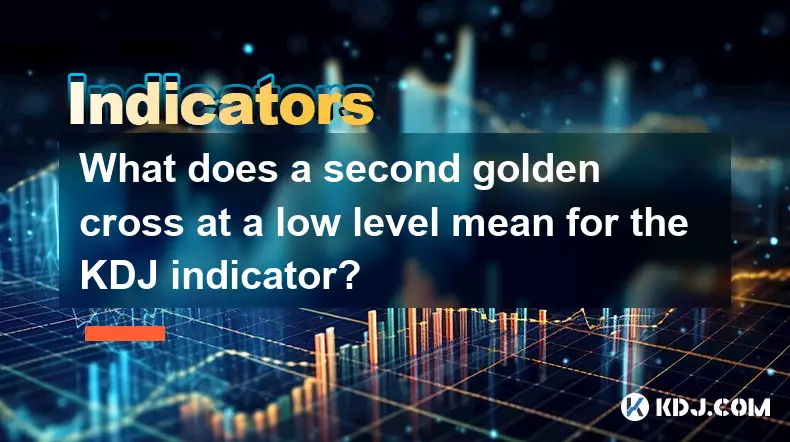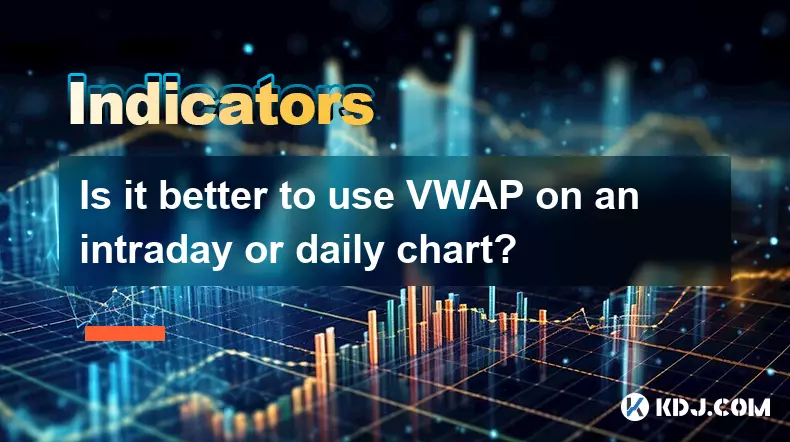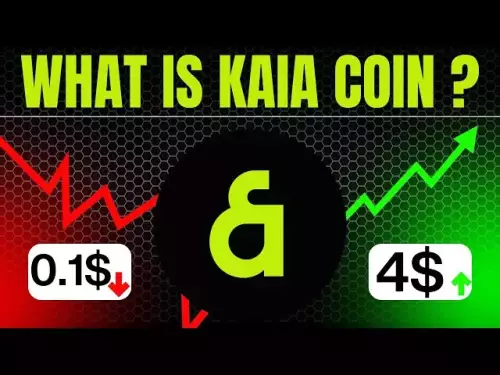-
 bitcoin
bitcoin $112715.707551 USD
-1.71% -
 ethereum
ethereum $4101.475385 USD
-3.01% -
 tether
tether $1.000644 USD
-0.02% -
 bnb
bnb $1207.619465 USD
-6.77% -
 xrp
xrp $2.501451 USD
-3.98% -
 solana
solana $202.947124 USD
-3.32% -
 usd-coin
usd-coin $1.000295 USD
0.04% -
 dogecoin
dogecoin $0.203884 USD
-4.47% -
 tron
tron $0.317154 USD
-1.72% -
 cardano
cardano $0.695009 USD
-4.43% -
 hyperliquid
hyperliquid $38.853961 USD
-8.23% -
 chainlink
chainlink $18.988674 USD
-4.64% -
 ethena-usde
ethena-usde $1.000233 USD
-0.03% -
 stellar
stellar $0.337050 USD
-3.63% -
 bitcoin-cash
bitcoin-cash $536.861728 USD
-1.28%
What does a second golden cross at a low level mean for the KDJ indicator?
A second KDJ golden cross at low levels signals strong rebound potential in crypto, especially when confirmed by bullish divergence and volume.
Sep 17, 2025 at 12:36 pm

Understanding the Second Golden Cross in KDJ at Low Levels
The KDJ indicator, a widely used momentum oscillator in cryptocurrency trading, combines the stochastic principles of price movement to signal overbought or oversold conditions. When traders observe a second golden cross occurring at low levels within the KDJ framework, it often reflects a deeper layer of market sentiment and potential reversal dynamics.
1. A golden cross in the KDJ typically refers to the moment when the %K line crosses above the %D line from below, especially when both lines are positioned in the oversold region—usually below 20. This initial crossover may suggest a recovery attempt after prolonged selling pressure.
2. The appearance of a second golden cross under similar low-level conditions reinforces the idea that buying interest is re-emerging despite previous failed attempts. In volatile markets like cryptocurrencies, such repeated signals can indicate accumulation by informed investors who are stepping in after fear-driven sell-offs.
3. Unlike a single crossover, which might be dismissed as noise, a second occurrence suggests persistence in bullish momentum. It often forms after price has tested support levels multiple times, creating a double bottom or extended consolidation phase visible on candlestick charts.
4. Traders monitor the divergence between price action and KDJ readings during these setups. If prices make a lower low while the KDJ forms a higher low, this bullish divergence combined with a second golden cross increases the reliability of a potential upward move.
5. However, context matters significantly. In strong downtrends, even repeated golden crosses may fail if broader market sentiment remains bearish. Therefore, volume analysis and alignment with other technical tools such as moving averages or RSI should accompany KDJ interpretation.
Implications for Crypto Market Timing
1. Cryptocurrency assets, known for their high volatility, frequently exhibit rapid shifts in momentum. A second golden cross at low KDJ levels can serve as an early alert for trend exhaustion among altcoins or even major tokens like Bitcoin and Ethereum.
2. Day traders and swing traders use this pattern to time entries, particularly when the market has undergone a sharp correction due to regulatory fears, macroeconomic news, or sector-wide liquidations.
3. When observed across multiple timeframes—such as daily and four-hour charts—the signal gains strength. For instance, a second golden cross on the daily chart following one on the hourly enhances confidence in a sustainable rebound.
4. The psychological aspect also plays a role. After the first golden cross fails to ignite a rally, market participants may become skeptical. A second formation challenges that skepticism, potentially triggering short squeezes or FOMO-driven buying once resistance breaks.
5. It’s important to note that not all golden crosses carry equal weight. Those appearing after extended periods below level 10 in the KDJ tend to have stronger follow-through than those near level 20, where oversold conditions are less extreme.
Risk Management Around KDJ Signals
1. While the second golden cross can hint at a turning point, false signals are common in choppy or range-bound crypto markets. Setting stop-loss orders just below recent swing lows helps protect against downside surprises.
2. Position sizing should reflect uncertainty; initiating partial positions upon the first confirmation and adding more if momentum builds allows flexibility without overcommitting.
3. Combining the KDJ signal with structural elements such as key support zones, Fibonacci retracement levels, or order book depth improves decision-making accuracy, especially on exchanges with transparent limit order data.
4. Monitoring on-chain metrics like exchange outflows or active addresses can provide fundamental backing to the technical signal. A surge in wallet activity concurrent with the second golden cross strengthens the case for genuine demand.
5. Backtesting historical instances of this pattern across different coins—like Solana, Cardano, or Binance Coin—reveals how often it leads to profitable outcomes versus whipsaws, helping refine entry rules.
Frequently Asked Questions
What is the difference between a golden cross and a death cross in KDJ?A golden cross occurs when the %K line rises above the %D line, signaling potential bullish momentum, especially in oversold regions. A death cross happens when %K falls below %D in overbought areas (typically above 80), indicating possible bearish reversal.
Can the KDJ indicator be applied effectively on 15-minute crypto charts?Yes, the KDJ works well on short timeframes like 15-minute charts, offering timely signals for scalping strategies. However, increased noise requires stricter filtering through volume or trend confirmation to avoid false triggers.
Does the second golden cross work better in bull or bear markets?It tends to be more reliable in bear markets nearing exhaustion, where panic selling has already occurred. In strong bull phases, low-level crossovers are rarer and may indicate temporary pullbacks rather than reversals.
How do you adjust KDJ settings for cryptocurrency volatility?Standard KDJ uses 9-period calculations, but many traders shorten it to 5 or extend smoothing to reduce erratic movements. Adjusting to 5,3,3 instead of 9,3,3 makes the indicator more responsive to sudden price swings typical in digital assets.
Disclaimer:info@kdj.com
The information provided is not trading advice. kdj.com does not assume any responsibility for any investments made based on the information provided in this article. Cryptocurrencies are highly volatile and it is highly recommended that you invest with caution after thorough research!
If you believe that the content used on this website infringes your copyright, please contact us immediately (info@kdj.com) and we will delete it promptly.
- BTC, ETH, and Crypto Presales: Navigating the Storm with MoonBull & LivLive
- 2025-10-15 11:05:13
- Trump, Bitcoin, and Trump Media: A New York Minute on Crypto's Latest Twist
- 2025-10-15 11:05:13
- Crypto Scam Crackdown: Cambodian Executive, Bitcoin Seizure, and a $14 Billion Heist
- 2025-10-15 11:10:00
- Bitcoin's Wild Ride: Structural Demand Survives the Liquidation Tsunami
- 2025-10-15 11:10:00
- Bitcoin's Quantum Break: Charles Edwards' Urgent Warning and the $150K Horizon
- 2025-10-15 11:10:00
- Bitcoin Price Eyes $120K Rebound? DeepSnitch AI Steals the Show
- 2025-10-15 11:10:16
Related knowledge

What's the main difference between VWAP and TWAP?
Oct 12,2025 at 11:54am
Understanding VWAP and Its Role in Crypto Trading1. Volume Weighted Average Price (VWAP) is a trading benchmark that calculates the average price of a...

How do you identify exhaustion moves using VWAP and its bands?
Oct 12,2025 at 08:00am
Understanding the Role of Decentralized Exchanges in Crypto Trading1. Decentralized exchanges (DEXs) operate without a central authority, allowing use...

Is it better to use VWAP on an intraday or daily chart?
Oct 15,2025 at 02:01am
Intraday Trading and the Role of VWAP1. Intraday traders frequently rely on VWAP (Volume Weighted Average Price) as a dynamic benchmark for assessing ...

How do you use VWAP to scale in and out of positions?
Oct 14,2025 at 02:19am
Understanding VWAP as a Dynamic Benchmark1. The Volume Weighted Average Price (VWAP) is not just an indicator—it functions as a dynamic benchmark that...

What are the main advantages of using VWAP over EMA?
Oct 11,2025 at 02:18am
Main Advantages of Using VWAP Over EMA1. Volume-Weighted Average Price (VWAP) incorporates trading volume into its calculation, offering a more accura...

How do you use VWAP on different chart types like Heikin Ashi?
Oct 11,2025 at 05:01pm
Understanding VWAP in the Context of Heikin Ashi Charts1. The Volume Weighted Average Price (VWAP) is a powerful analytical tool commonly used by trad...

What's the main difference between VWAP and TWAP?
Oct 12,2025 at 11:54am
Understanding VWAP and Its Role in Crypto Trading1. Volume Weighted Average Price (VWAP) is a trading benchmark that calculates the average price of a...

How do you identify exhaustion moves using VWAP and its bands?
Oct 12,2025 at 08:00am
Understanding the Role of Decentralized Exchanges in Crypto Trading1. Decentralized exchanges (DEXs) operate without a central authority, allowing use...

Is it better to use VWAP on an intraday or daily chart?
Oct 15,2025 at 02:01am
Intraday Trading and the Role of VWAP1. Intraday traders frequently rely on VWAP (Volume Weighted Average Price) as a dynamic benchmark for assessing ...

How do you use VWAP to scale in and out of positions?
Oct 14,2025 at 02:19am
Understanding VWAP as a Dynamic Benchmark1. The Volume Weighted Average Price (VWAP) is not just an indicator—it functions as a dynamic benchmark that...

What are the main advantages of using VWAP over EMA?
Oct 11,2025 at 02:18am
Main Advantages of Using VWAP Over EMA1. Volume-Weighted Average Price (VWAP) incorporates trading volume into its calculation, offering a more accura...

How do you use VWAP on different chart types like Heikin Ashi?
Oct 11,2025 at 05:01pm
Understanding VWAP in the Context of Heikin Ashi Charts1. The Volume Weighted Average Price (VWAP) is a powerful analytical tool commonly used by trad...
See all articles


























![Staking ATH: How To Stake $ATH in October 2025 with 523% APY — [Step-By-Step Guide] Staking ATH: How To Stake $ATH in October 2025 with 523% APY — [Step-By-Step Guide]](/uploads/2025/10/15/cryptocurrencies-news/videos/staking-ath-stake-ath-october-apy-stepstep-guide/68eef94d80903_image_500_375.webp)















































